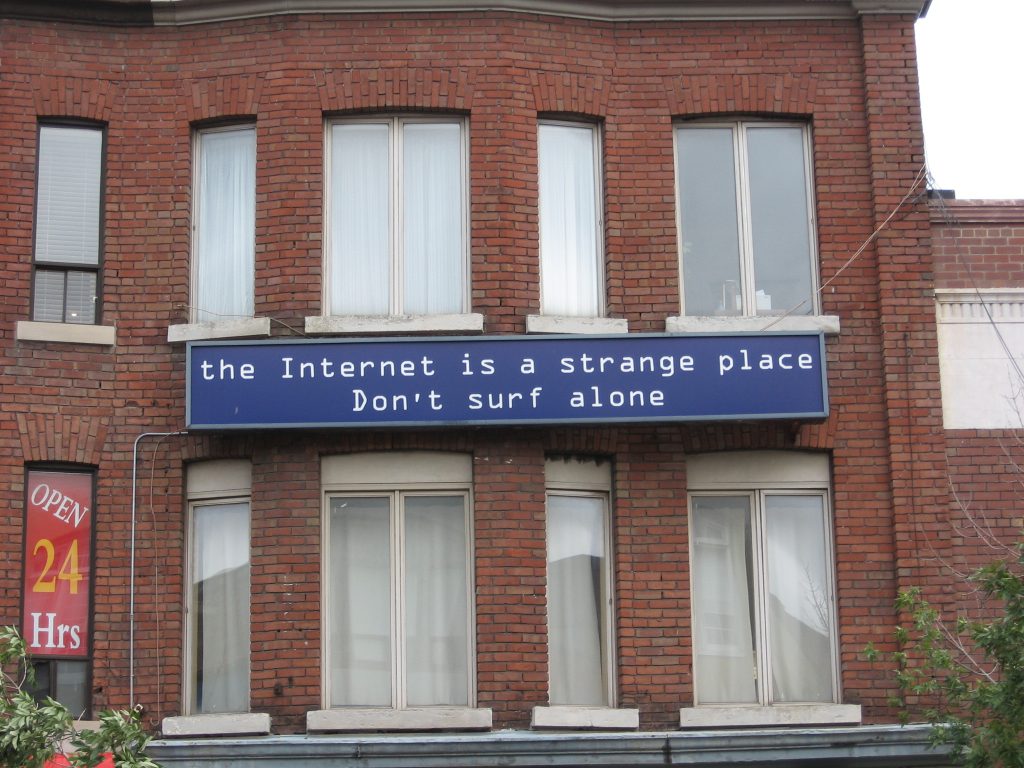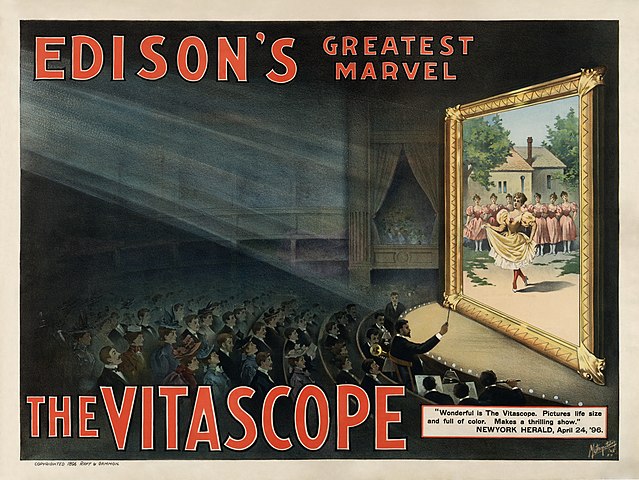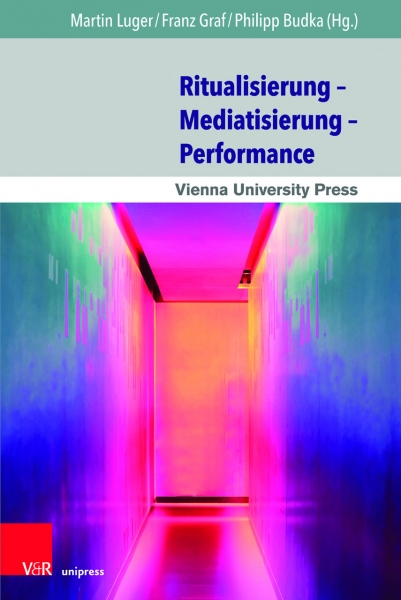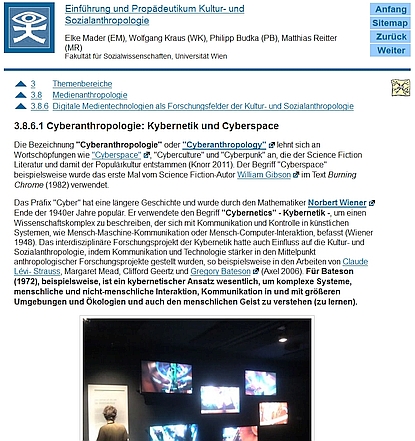Diese Serie von Blogeinträgen beschreibt die Relevanz kultur- und sozialanthropologischer Zugänge in der Untersuchung digitaler Technik und Technologien, dargestellt anhand wissenschaftstheoretischer Aspekte in der Entwicklung der Forschungsfelder der “Cyberanthropologie” und der “Digitalen Anthropologie”. Kommentare und/oder Anmerkungen sind dezidiert erwünscht.
Die einzelnen Blogeinträge bauen, leicht verändert, auf einen Text, der 2019 im Sammelband Ritualisierung – Meditatisierung – Performance publiziert wurde:
Budka, P. (2019). Von der Cyber Anthropologie zur Digitalen Anthropologie. Über die Rolle der Kultur- und Sozialanthropologie im Verstehen soziotechnischer Lebenswelten. In M. Luger, F. Graf & P. Budka (Eds.), Ritualisierung – Mediatisierung – Performance (pp. 163-188). Göttingen: V&R Unipress/Vienna University Press. https://doi.org/10.14220/9783737005142.163
Anthropologische Perspektiven auf Technik und Technologie 1/2
Seit Jahrzehnten untersuchen Kultur- und SozialanthropologInnen neue und “moderne” Techniken und Technologien und wie diese vor allem in “nichtwestlichen” Gesellschaften verwendet und angeeignet werden (z.B. Godelier 1971; Pfaffenberger 1992; Sharp 1952). Doch, wie etwa Arturo Escobar (1994) betont, gestaltet es sich oft schwierig, diese Forschungsansätze und -befunde auf hoch komplexe, technische Umgebungen in “modernen” Gesellschaften zu übertragen. Aus anthropologischer Perspektive bedeutet diese Transferschwierigkeit aber weder eine Abwertung von spezifischen Techniken oder Technologien und damit verbundenen gesellschaftlichen und kulturellen Systemen noch deren Hierarchisierung, etwa in einem evolutionistischen Sinn (z. B. Ingold 2000). All diese soziotechnischen Phänomene sind hoch komplex und heterogen.
Um diese Phänomene und damit zusammenhängende soziale Praktiken und kulturelle Prozesse an den Schnittstellen von Gesellschaft, Wissenschaft und Technik zu analysieren und zu verstehen, ist es notwendig, passende theoretische Zugänge und Konzepte zu generieren sowie empirische Befunde zu sammeln (z. B. Fischer 2007; Pfaffenberger 1992). Wie Robert Adams (1996: xiii) festhält, erlaubt gerade die Anthropologie als wissenschaftliche Disziplin eine spezifische, offene Sichtweise auf Technik und Technologie, die wesentliche Vorzüge hat. Erstens vermeidet sie eine Reduktion auf simple Regularitäten und messbare Quantitäten im Verstehen komplexer soziotechnischer Interaktionen. Weiters werden integrative und kontextbezogene Zugänge betont, um soziotechnischen Wandel und soziotechnische Kontinuität zu untersuchen. Und drittens erlaubt der Fokus auf Diversität scheinbar allgemein akzeptierte Kategorisierungen und Beschreibungen von soziokulturellen Phänomenen kritisch zu hinterfragen.
So setzt beispielsweise Bryan Pfaffenberger (1988b: 244) den beiden Extrempositionen des “technologischen Somnambulismus”, die keinen kausalen Zusammenhang zwischen Technologie, Gesellschaft und Kultur erkennen will, und des “technologischen Determinismus”, die Technologie als die alles bestimmende gesellschaftliche Antriebskraft versteht, das Konzept der “humanisierten Natur” entgegen, das Technologie als soziokulturelles Konstrukt versteht, das der Mensch aus seiner ihn umgebenden Natur gestaltet. Dieses Technologieverständnis versucht deterministische Zugänge ebenso zu vermeiden wie die damit verbundene Fetischisierung von Technologie (Budka 2013). Technologie als “humanisierte Natur” ist laut Pfaffenberger (1988b) ein fundamental soziales – oder angelehnt an Marcel Mauss (1989) ein “totales” – Phänomen, das das Materielle, das Soziale und das Symbolische in einem assoziativen Netz kombiniert.
Die Überzeugung, dass technische und gesellschaftliche Phänomene nicht getrennt voneinander zu untersuchen und zu verstehen sind, ist also grundlegend für die Anthropologie wie auch für die Wissenschafts- und Technikforschung sowie die Techniksoziologie (z. B. Bijker/Law 1992; Degele 2002). Aufgrund der Komplexität der Thematik ist es auch schwierig, eine allgemein gültige Definition von Technik bzw. Technologie zu finden. So meint etwa François Sigaut (1997: 422), dass sich letztlich viele Bemühungen, Technologie zu definieren, als widersprüchlich und damit als nutzlos herausstellen. Und Tim Ingold (2000: 296f.) konstatiert grundlegende Unterschiede in den Versuchen, Technologie zu definieren, die vorrangig davon abhängig sind, wie umfassend diese Definitionen angelegt werden und wie das Verhältnis zwischen Technologie und Wissenschaft interpretiert wird.




